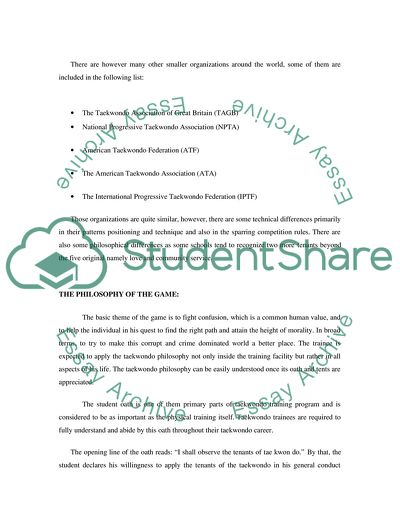Cite this document
(“Taekwondo: The Spirit of Korea Article Example | Topics and Well Written Essays - 2000 words”, n.d.)
Retrieved from https://studentshare.org/culture/1517871-thesis-regarding-to-taekwondo
Retrieved from https://studentshare.org/culture/1517871-thesis-regarding-to-taekwondo
(Taekwondo: The Spirit of Korea Article Example | Topics and Well Written Essays - 2000 Words)
https://studentshare.org/culture/1517871-thesis-regarding-to-taekwondo.
https://studentshare.org/culture/1517871-thesis-regarding-to-taekwondo.
“Taekwondo: The Spirit of Korea Article Example | Topics and Well Written Essays - 2000 Words”, n.d. https://studentshare.org/culture/1517871-thesis-regarding-to-taekwondo.


